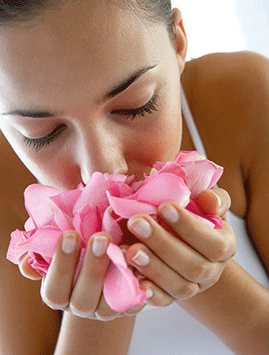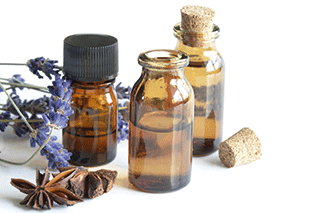Your essential guide to aromatherapy

We take a look at some of the health and beauty benefits of popular essential oils
Aromatherapy has been used for thousands of years to support many aspects of health and wellbeing. It utilises essential oils, which are concentrated, aromatic plant extracts, for therapeutic purposes, and has many benefits from soothing stress and insomnia to easing muscular aches and pains.
“Essential oils are composed of hundreds of active constituents, which each possess therapeutic properties that affect the mind, body and emotions in various ways,” explains Gemma Clare, a global holistic health specialist and clinical aromatherapist (www.gemmaclare.com).
“Essential oils can be absorbed into the bloodstream via the respiratory system, olfactory system and the skin, where they interact with the body’s tissues and organs, as well as the limbic system, the part of the brain that controls emotions to produce therapeutic effects.”
Essential oils can be used in a variety of ways. For example, they can be used in massage, added to a warm bath or a vaporiser or they can be inhaled. However, Gemma adds: “There are certain conditions which are contra-indicated to aromatherapy. If you suffer from a chronic or serious health problem, if a problem becomes severe or you are in any doubt, seek professional advice from an aromatherapist.”
Here are some examples of the most popular essential oils and how they can benefit our health and wellbeing.
Peppermint
“Peppermint is a stimulating essential oil,” says Gemma. “It is widely used in the food and pharmaceutical industry, as it is one of the few essential oils that can be taken internally. It is renowned for its ability to treat digestive problems, including irritable bowel syndrome (IBS), indigestion and nausea. It also eases travel sickness. Peppermint can aid in respiratory problems as it decreases muscle spasms. If you suffer with asthma, congestion, catarrh, bronchitis, sinusitis or colds then a steam inhalation with peppermint oil is a great choice.
“Psychologically, peppermint combats fatigue. It purifies and refreshes a tired mind, increasing clarity and mental alertness, which makes it a useful tool to aid concentration. Emotionally, peppermint can be used to dispel anger, apathy, guilt and insecurity. It is often used to treat shock and depression.”
Lavender
“Lavender has been used for thousands of years and, today, it is without doubt the most versatile and widely used essential oil,” says Joannah Metcalfe, consultant aromatherapist with www.baseformula.com.
“Lavender is a soothing, calming and relaxing oil. It can be helpful for relieving stress, anxiety, mood swings and insomnia. Its skin healing and antiseptic properties are beneficial for minor burns, cuts, wounds, and other skin irritations such as spots, sun burn, insect bites and stings. Its antiviral and decongestant properties are good for fighting off colds and flu and it can also be extremely useful for relieving muscular aches, pains, spasms, headaches and migraines.”
Sandalwood
“Sandalwood essential oil is produced in India and is also grown in New Caledonia,” explains Sarah Watson of Natural by Nature Oils (www.naturalbynature.co.uk).
“This essential oil is pale yellow in colour and has a very pleasant, sweet, woody base note with a delicate, spicy, oriental undertone. As a perfume, sandalwood is very long lasting and is used as a fixative for other perfume ingredients. It can be used as a tonic, an emollient, a sedative, an anti-inflammatory and an expectorant. It can help stimulate the spleen, promotes white blood cell production and can strengthen the immune system against infection. It is good for all skin types, especially dry and dehydrated skin. It also helps to dispel anxiety and depression.”

Chamomile
“Chamomile is a relaxing essential oil with Roman chamomile being the most common type,” says Gemma. “Highly effective at soothing chronic pain, Roman chamomile is commonly used to treat menstrual complaints as it calms pre-menstrual mood swings and weepiness as well as menstrual cramps. Roman chamomile is also highly regarded in treating swollen joints, arthritis, muscular tension and stress-related conditions, such as insomnia, via a relaxing aromatherapy massage. This gentle, safe and effective essential oil can be used with children and infants to help ease irritability, tantrums, inability to sleep and hyperactivity. A popular ingredient in skincare, Roman chamomile can be used to treat skin conditions including acne, eczema, dermatitis and rosacea.”
Geranium
“Geranium is an emotionally soothing and balancing oil,” says Joannah. “It has a close affinity with the female system and is particularly useful for hormonal/menstrual problems such as PMT and the menopause. Its antidepressant effect can help to stabilise and lift the emotions, counteract nervous anxiety and regulate mood swings. It is beneficial for both dry and oily skin types as it helps to regulate the skin’s natural oil, sebum. It also has anti-inflammatory, healing properties that are beneficial for skin conditions such as eczema. Geranium is also one of the best oils for detoxifying the lymphatic system and reducing cellulite.”
Bergamot
“Bergamot essential oil from Italy has been popular since the 18th century when it was used in the original formula for ‘eau de cologne’ and it is still used in fragrance creations,” says Jennie Harding, essential oil expert and training manager at Tisserand Aromatherapy (www.tisserand.com).
“It is used in aromatherapy to uplift and cheer negative feelings. It has a beautiful, rounded, citrus aroma with sweet notes. In skin applications it helps balance over-oily complexions and in body massage blends it is used for a ‘feelgood’ note and to purify the skin. Safety tip: wait for at least 12 hours after application before exposing skin to strong UV rays, because bergamot can cause irregular patches of pigmentation.”
Frankincense
“Frankincense essential oil is colourless with a warm, balsamic, spicy aroma that is dry and fortifying with sweet undertones,” says Sarah. “It was among the earliest incenses with 3,000 years of continual religious usage. Valued as highly as gold, it was long used by the Egyptians for religious and ceremonial purposes. It has antiseptic, sedative, anti-inflammatory and expectorant properties. It helps to slow down the breathing, ensuring calm and comfort, and is very useful for asthma. Frankincense is also skin-rejuvenating and especially good for ageing skin and wrinkles as well as for preserving a youthful complexion. It is effective for healing wounds and scars.”
Rosemary
“Rosemary is a revitalising and strengthening essential oil,” says Joannah. “It has powerful cephalic properties that help to stimulate the brain and increase alertness. It can help with debility following illness, fatigue, lack of direction, poor concentration and memory. It is beneficial for catarrhal congestion associated with coughs, colds and flu, and can help boost the immune response to the bacterium or virus that is presenting. Rosemary is useful in massage blends for painful, tired, stiff muscles. It is also often recommended to prevent dandruff and promote healthy hair growth. Do not use during pregnancy or if suffering with epilepsy.”
Ylang ylang
“The name ylang ylang means ‘flower of flowers’, from a tree native to Madagascar,” says Jennie. “The thick-petalled blooms have a very rich, exotic, floral aroma which is captured in the essential oil. Ylang ylang is a mood-enhancing essential oil with a sensual effect, thanks to its pheromonal scent. It’s used in aromatherapy massage blends for a deep ‘chill-out’ feeling. In facial massage blends ylang ylang can help to tone mature skin. Ylang ylang is very strong – only a little is ever needed. Too much can cause headaches.”
Using essential oils safely
Sarah Watson, of Natural by Nature Oils, highlights some precautions to bear in mind:
- Do not take essential oils internally.
- Do not use undiluted essential oils on the skin (except where indicated).
- Keep out of reach of children.
- Keep away from eyes.
- Some people may have an allergic reaction to essential oils.
- Extra precautions should be taken when using essential oils during pregnancy.
- Always seek professional advice if unsure.
Read previous Your Look articles here...